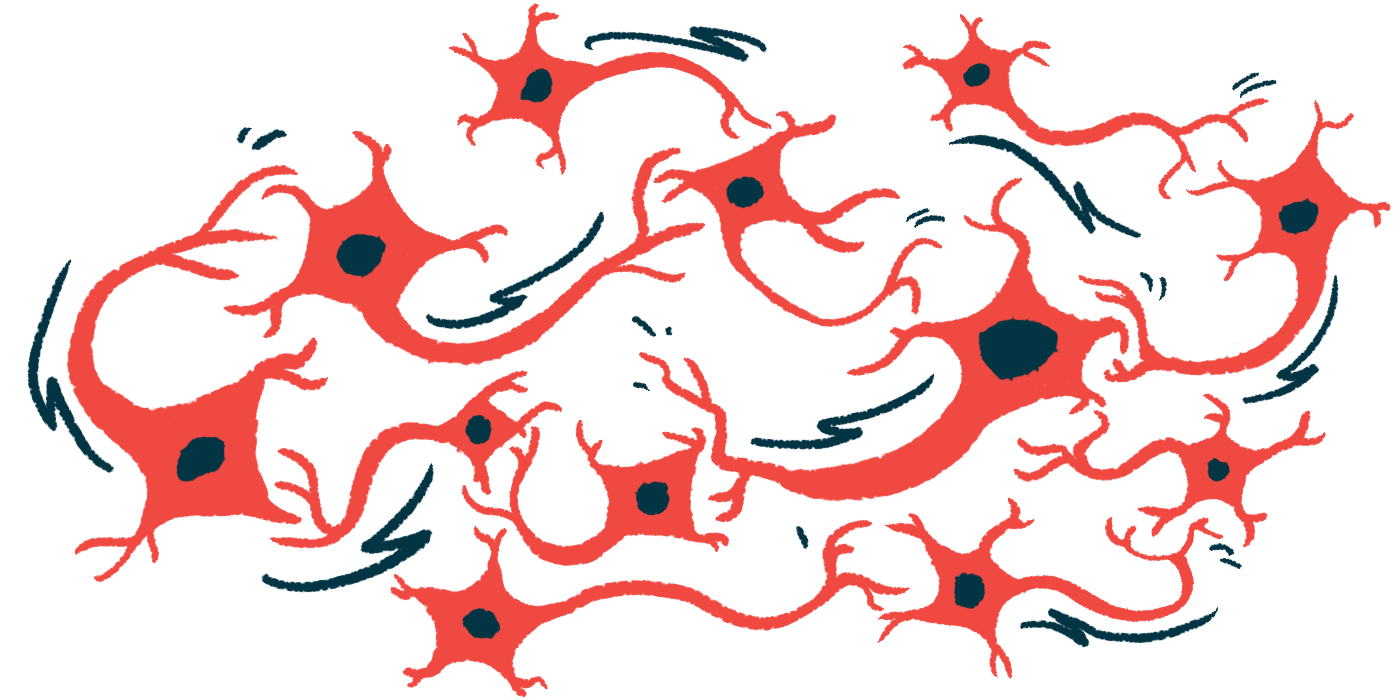Molecular Feedback Loop May Explain Motor Neuron Damage

The RNA-binding protein Mid1 increases levels of the mutated androgen receptor (AR) that drives nerve cell degeneration in spinal and bulbar muscular atrophy (SBMA), a new study shows.
Since Mid1 is expressed mainly in lower motor neurons, the nerve cells mainly affected in SBMA, the study’s researchers proposed that a bi-directional feedback loop between Mid1 and mutant AR may explain why these cells are especially vulnerable in the disease.
The study, “Mid1 is associated with androgen-dependent axonal vulnerability of motor neurons in spinal and bulbar muscular atrophy,” was published in Cell Death & Disease.
SBMA is caused by a mutation in the gene encoding a protein called androgen receptor, or AR. Specifically, the mutation that causes SBMA is called a CAG-repeat expansion, where a particular sequence of three nucleotides (“letters” of the genetic code) are repeated an excessive number of times.
The mutant AR protein forms clumps inside the nucleus, the cellular compartment housing DNA, and this drives cellular toxicity. Lower motor neurons, the movement-controlling nerve cells that run from the spinal cord out to the rest of the body, are primarily affected in SBMA. However, the specific biological mechanisms that make these cells vulnerable to mutant AR remain unclear.
Scientists at Nagoya University, Japan analyzed transcriptome data from a mouse model of SBMA. The transcriptome is basically a global view of genetic activity in cells — which genes are “turned off or on,” and by how much. The researchers looked for genes that are impaired in SBMA mice and mainly expressed in the lower motor neurons most affected by the disease.
Their analysis identified a protein called Mid1 as a likely candidate; it was active at increased levels in SBMA mice and is usually only expressed in lower motor neurons. Mouse experiments confirmed Mid1 protein is expressed in lower motor neurons starting in early stages of development.
When a protein-coding gene is “read,” the cell makes a temporary copy of the genetic code stored in its DNA using a molecule called messenger RNA (mRNA). The mRNA is then shuttled to the cell’s protein-making machinery, which translates the code to make a protein. The Mid1 protein normally plays a role in this translation, helping to generate certain proteins by interacting with the mRNA that provides instructions for making those proteins.
The Mid1 protein is known to interact with mRNA molecules that harbor a CAG-repeat expansion, the same type of mutation that causes SBMA. A battery of experiments in cells showed that Mid1 could bind to mRNA for AR protein harboring this mutation, and this binding ultimately increased the production of the disease-driving protein.
“Mid1 binding to AR depends on the length of CAG-repeat expansion, leading to an increase in the protein levels of pathogenic [disease-causing] AR potentially through translational upregulation,” the researchers wrote.
In other experiments, the researchers examined the development of SBMA motor neurons in a “spinal cord slice” culture system. Results showed the disease-causing AR mutation impaired the development of axons, the long wire-like structures that nerves use to connect to other body parts. They are sometimes called nerve fibers.
Increasing Mid1 levels further exacerbated the axonal defects in these models, while reducing the protein’s levels led to less extensive axon abnormalities.
“The present study demonstrates that Mid1, a microtubule-associated RNA binding protein exclusively expressed in the motor neurons of the spinal cord, interacts with CAG-repeat expanded AR mRNA and increases the protein levels of pathogenic AR in both cellular and organotypic slice culture models of SBMA,” the scientists said.
The scientists noted AR normally regulates the expression of many genes, including the one that codes for Mid1. The team speculated that in SBMA mutant AR cannot perform its normal regulatory functions, which leads to the increased production of Mid1 protein, which further increases mutant AR production.
“The bi-directional feedbacks between pathogenic AR and Mid1 could contribute to the vulnerability of motor neurons in SBMA,” the researchers wrote.








